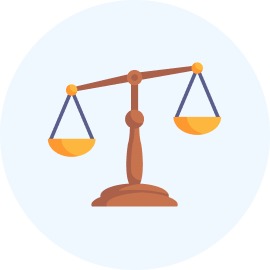CLAT Exam > CLAT Videos > English for CLAT > Basic concept and rules of Pronouns
Basic concept and rules of Pronouns Video Lecture | English for CLAT
This video is part of 70 videos|112 docs|100 tests | Join course for free |
|
70 videos|112 docs|100 tests
|
FAQs on Basic concept and rules of Pronouns Video Lecture - English for CLAT
| 1. What are pronouns and why are they important? |  |
| 2. What are the different types of pronouns? |  |
Ans. There are several types of pronouns, including personal pronouns (e.g., I, you, he, she), possessive pronouns (e.g., mine, yours, his, hers), reflexive pronouns (e.g., myself, yourself, himself, herself), demonstrative pronouns (e.g., this, that, these, those), and indefinite pronouns (e.g., someone, anybody, everything, few).
| 3. How do pronouns agree with their antecedents? |  |
Ans. Pronouns must agree with their antecedents in terms of number (singular or plural) and gender (masculine, feminine, or neuter). For example, if the antecedent is singular, the pronoun that replaces it must also be singular. Similarly, if the antecedent is feminine, the pronoun should be feminine as well.
| 4. Can pronouns be used as subjects and objects in a sentence? |  |
Ans. Yes, pronouns can be used as both subjects and objects in a sentence. When a pronoun is used as a subject, it performs the action in the sentence (e.g., "She runs"). On the other hand, when a pronoun is used as an object, it receives the action (e.g., "He hit her").
| 5. What is the importance of using the correct pronouns in writing? |  |
Ans. Using the correct pronouns in writing is essential for maintaining clarity and avoiding confusion. Incorrect pronoun usage can lead to grammatical errors and misinterpretation of the intended meaning. Additionally, using appropriate pronouns respects the gender identity of individuals and promotes inclusivity in language.
Related Searches




























